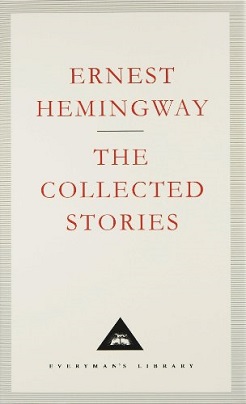
Ernest Hemingway: The Collected Stories is a posthumous collection of Hemingway's short fiction, published in 1995. Introduced by James Fenton, it is published in the UK only by Random House as part of the Everyman Library. The collection is split in two parts.
Part One contains the four individual collections of stories Hemingway published during his lifetime. They are the tiny experimental prose volume, in our time (1924), the much expanded In Our Time (1925, with an extra story added in 1930), Men Without Women (1927) and Winner Take Nothing (1933). In addition, four further stories were first published in Hemingway's first omnibus, The Fifth Column and the First Forty-Nine Stories (1938).
Part Two contains anomalous stories which were added to the collections Hemingway (and others) have since published. It is also includes some stories, fragments and juvenilia that have never before been published in book-form. The collection does, however, limit itself to material that had already appeared in print.
Some material, first published in The Complete Short Stories (1987), is not included in this edition, as Fenton determined that it was not properly classified as short stories. This includes "One Trip Across" and "Tradesman's Return" (the first two parts of To Have and Have Not ); and "An African Story" (filleted from various chapters of The Garden of Eden —itself a posthumous novel).